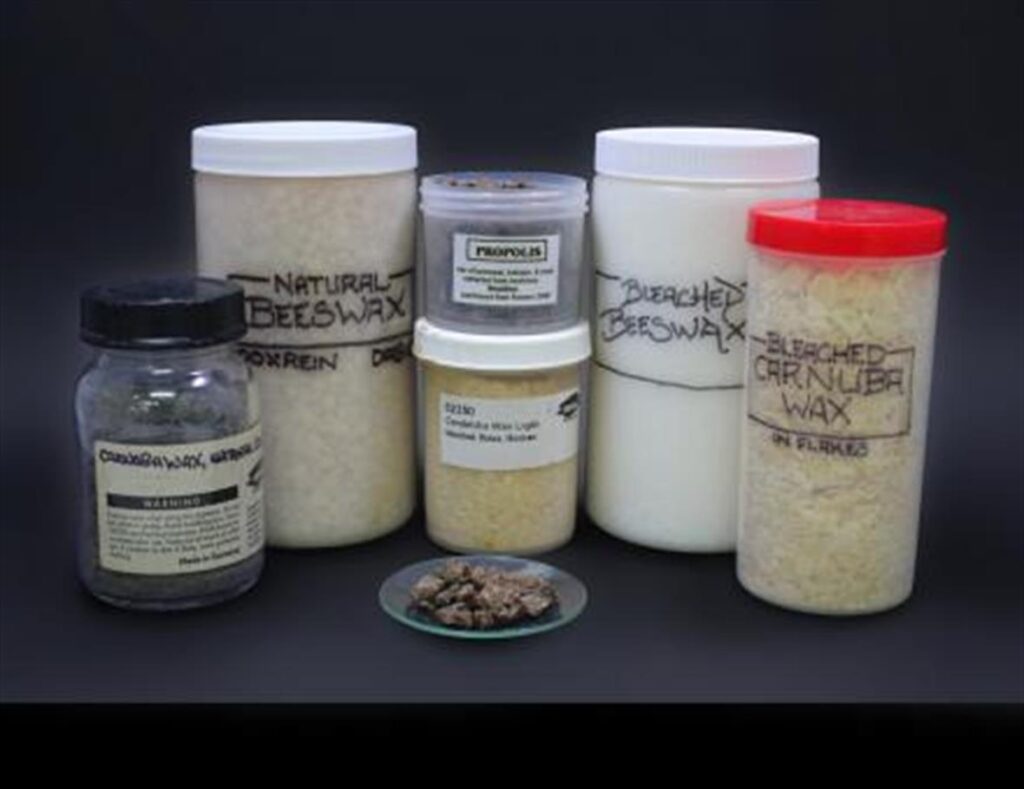WAXES
Contents
What is a Wax?Examples of Waxes:
Works Cited
What is a Wax?
Natural waxes are generally described as a material containing long chain hydrocarbons, acids, alcohols or esters, or mixtures of these. They are usually opaque or translucent and have a low melting point as compared to resins and other paint additives. Waxes can be derived from animals, plants and minerals and have been used in a variety of contexts since ancient times. (The Organic Chemistry of Museum Objects)
Examples of Waxes:
Propolis (Brazil) – Propolis is a resinous mixture that honey-bees collect from a variety of botanical sources and is used for filling small gaps in the hive. The color of propolis will range, although the most common is generally a dark-brown hue. This wax-resin mixture is tacky at room temperature and melts at a higher temperature than normal beeswax. This material has a long history of being a varnish additive, most notably for instruments created by Antonio Stradivari.
Carnuba Wax – Collected from the palm leaves of the Copernicia Cerifera tree in Brazil, this wax is known for its hard, lustrous properties. Carnuba has been used as a primary ingredient for encaustic recipes and can be added to beeswax to raise the melting point and impart hardness. It is also used as a surface coating, a varnish additive, and in the cosmetic industry.
Candelilla Wax – This vegetable wax is obtained from the Candelilla plant that is native to Mexico and the Southern United States. Like Carnuba, it has a higher melting point than normal beeswax and can be used for similar applications.
Natural/Bleached Beeswax – Beeswax is collected from the hives created by the honey-bee (Apis Mellifera) and has been used for its lustrous qualities and water-repellant properties for centuries. Natural beeswax can come in a variety of yellow and brown tones depending on the botanical sources that are nearby the hive. Beeswax was originally bleached using sunlight (today chemicals are used) in order to eliminate the natural colorants and impart a certain degree of translucency. Today, beeswax can also be bleached through chemical means.
Works Cited
Mills, John S., Raymond White, “Carbohydrates: Sugars and Polysaccharides” in Organic Chemistry of Museum Objects, Reed Educational and Professional Publishing (1994): 76.

